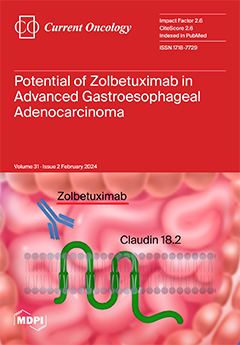Papillary thyroid microcarcinoma (PTMC) represents 35–40% of all papillary cancers; it is defined as a nodule ≤ 10 mm at the time of histological diagnosis. The clinical significance of PTMC is still controversial, and it may be discovered in two settings: incidental PTMC
[...] Read more.
Papillary thyroid microcarcinoma (PTMC) represents 35–40% of all papillary cancers; it is defined as a nodule ≤ 10 mm at the time of histological diagnosis. The clinical significance of PTMC is still controversial, and it may be discovered in two settings: incidental PTMC (iPTMC), in which it is identified postoperatively upon histological examination of thyroid specimens following thyroid surgery for benign disease, and nonincidental PTMC (niPTMC), in which it is diagnosed before surgery. While iPTMC appears to be related to mild behavior and favorable clinical outcomes, niPTMC may exhibit markers of aggressiveness. We retrospectively review our experience, selecting 54 PTMCs: 28 classified as niPTMC (52%) and 26 classified as iPTMC (48%). Patients with niPTMC showed significant differences, such as younger age at diagnosis (
p < 0.001); a lower male/female ratio (
p < 0.01); a larger mean nodule diameter (
p < 0.001); and a higher rate of aggressive pathological findings, such as multifocality, capsular invasion and/or lymphovascular invasion (
p = 0.035). Other differences found in the niPTMC subgroup included a higher preoperative serum TSH level, higher hospital morbidity and a greater need for postoperative iodine ablation therapy (
p < 0.05), while disease-free long-term survival did not differ between subgroups (
p = 0.331) after a mean follow-up (FU) of 87 months, with one nodal recurrence among niPTMCs. The differences between iPTMC and niPTMC were consistent: patients operated on for total thyroidectomy and showing iPTMC can be considered healed after surgery, and follow-up should be designed to properly calibrate hormonal supplementation; conversely, niPTMC may sometimes exhibit aggressive behavior, and so the FU regimen should be closer and aimed at early detection of cancer recurrence.
Full article






